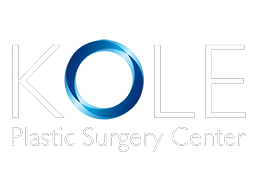A breast augmentation can improve the results of under-developed breasts, breast asymmetry, and changes in breast shape and size due to pregnancy or weight loss. The reasons why women elect breast augmentation surgery is perfectly understandable, which is why plastic surgeons like Dr. Edward Kole want to ensure that patients are aware of the risks associated with the procedure when deciding to undergo breast augmentation.
When talking to your plastic surgeon, Dr. Kole urges patients to be prepared to discuss their personal medical history. Important information to share with your surgeon includes:
- Allergies to medicines or foods.
- Current or previous medical conditions.
- Medications being taken including vitamins, over the counter medicines and herbal preparations.
- Previous surgical procedures
- Personal history or family history of breast cancer
This information does not rule you out as a candidate for breast augmentation surgery, but it does ensure that surgeons like Dr. Kole will approach your surgery with the best possible plan for care to minimize complications and adverse reactions.
Interference with mammograms and breast cancer
Importantly, there is no evidence that current breast augmentation procedures and implants increase your risk of breast cancer. Since the FDA introduced the new reformulated silicone implant in 2007, the risks once associated with silicone implants were greatly reduced. Still, if you are concerned about the possible risks related to silicone implants, especially silicone implant rupture, speak with Dr. Kole during your consultation about your concerns and possible alternatives including the use of saline implants.
Having implants does decrease the clarity of mammograms in some women, which will result in having an extra view on the mammogram called a displacement view where the breast tissue is slightly elevated from the implant and the mammogram film is taken. For women with a significant family history of breast cancer, additional studies like sonogram or an MRI can be used for the detection of breast cancer before or after surgery.
Above or below the muscle?
The position of the breast implant either below or above the pectoralis (chest wall ) muscle is also a factor. When the implant is placed above the pectoralis muscle, the implant is more easily felt, has a higher risk of developing hard scar around the implant and can lead to the bottom of the breast stretching out and the implants will lay lower on your chest over time and may also fall to the sides when you lay down. Implants placed below the pectoralis muscle feel better to the touch, have lower hard scar rates and generally look better in addition to not being in direct contact with the breast tissue.
Choice of Insertion site
The insertion site is also a factor for breast implant placement. The implants can be inserted 4 ways into the body. The first is through the umbilicus (belly button). Through this approach, the implant is inserted into a tube and tunneled from the umbilicus to the breast tissue. This non anatomical approach makes the implant prone to damage and bleeding and the dissection of the breast pocket difficult to control accurately. For these reasons, I do not perform breast enhancement procedures through the umbilicus. The second is the axilla or armpit approach. This approach requires a slightly larger incision in the fold of the axilla to gain access to the breast and has the benefit of not leaving a scar on the breast. The difficulty arises in protecting the small nerve which supplies sensation to the breast that is located in that area from injury. The third approach is the areola approach which is making an incision where the pigmented skin around the nipple meets the breast skin. If the areola is of significant diameter, and the breast skin-areola color is different, this approach can be used. Downfalls include a visible scar and possible decreases in nipple sensation. The last approach is the under the breast fold approach. This incision is the most direct and the smallest in size usually around ¾ of an inch for saline implants. This seems to be the most common approach for implant insertion.
Saline or Silicone?
Silicone implants seem to have a better more natural feel in thin women with little native breast tissue but this advantage is lost in women with adequate breast tissue volume to camouflage the implant. The main difference has to do with incision size and flexibility of the volume. Saline implants come empty from the manufacturer and can be rolled up and placed in the body through a small incision. The implants are then filled while they are inside your body with sterile salt water solution. These implants can be filled in a range of volumes, so if there is minor breast volume asymmetry that needs to be corrected, the implants can be filled to different volumes. Silicone implants on the other hand, come prefilled with silicone gel from the manufacturer. These implants require a larger incision to have these implants inserted into the body than saline filled. Breast asymmetry correction with silicone implants will require two different sizes of implants.
Rupture of the implant
All breast implants will rupture at some point in time and cannot be considered permanent. Rupture of a saline implant is relatively straight forward to notice because the salt water solution will become absorbed from your body and the breast on that side will be smaller. Silicone implants on the other hand are more difficult to tell when they rupture because the silicone gel does not get absorbed. Mammograms also have difficulty in detecting this rupture and for that reason the FDA recommends having a MRI exam the third year after initial augmentation with silicone implants and a follow up exam every two years after.
For more information about the risks associated with breast augmentation, make an appointment to consult with Kole Plastic Surgery at The Kole Plastic Surgery Center by calling 215-315-7655 .





